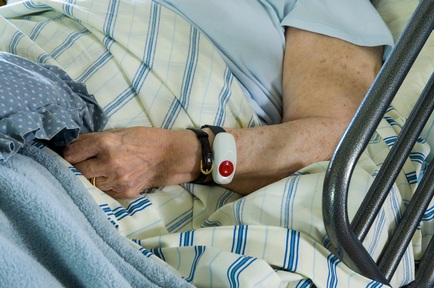Investors find care home sector 'challenging but attractive' as market's investigation begins
The care home sector in 2016 reflected two major events - the National Living Wage and the UK’s Brexit vote, according to a leading property broker, but the market in 2017 for quality homes remains 'robust'.

A number of large care home sales in late 2015 and early 2016 ’stalled as buyers and investors factored into their pricing the negative impact of the National Living Wage’, according to Christie & Co’s Business Outlook for 2017.
The UK’s vote for Brexit, according to Christie & Co's managing director of Care, Richard Lunn, 'brings challenges and opportunities for all sectors, however with staffing costs often in excess of 60 per cent of turnover, the ability to recruit people to work in the care sector remains one of the biggest issues facing operators'.
An inability to recruit nursing staff has also led to some nursing home operators closing services or repositioning themselves as residential care services.
Greater interest from Asia
Interest from American REITs and operators continues and despite UK investors and operators remaining “cautious in terms of larger transactions”, he said the ‘Brexit effect’ of a reduction in the value of pound sterling "has made the UK market more attractive to overseas investors, in particular, China and Malaysia.”
Many investors are attracted to a limited supply of newer purpose-built or remodelled services. Mr Lunn said the appetite for the development of purpose-built services continues, especially those aimed at the private-funded market, particularly for larger corporate operators.
Last October, Bupa UK acquired two purpose-built, private pay care businesses in the form of The Lindsay and The Links care homes in Bournemouth from Primetower Care in a company share sale brokered by Christie & Co.
Care home closures and distressed stock
The Local Government Association estimates there will be a £2.6bn funding gap in providing adult social care in England by 2020. Some 380 care homes were declared insolvent since 2010, according to the Insolvency Service. The number of failures every year has risen since 2010 and 34 failed in the first half of 2016.
The property broker reports that as standards continue to improve in the quality of care services, older, under invested stock is failing at a quicker rate. Mr Lunn said as corporate operators look to dispose of poorly performing stock, “we have continued to see an increase in the level of distressed stock coming to market”.
The increase is partly fuelled by tough regulation by the Care Quality Commission (CQC) and a tightening of margins for some operators.
The issue of recruitment of qualified staff and added regulatory burden from the CQC continue to raise costs and squeeze operator margins. This particularly affected operators only focused on caring for local authority-funded clients.
Private-funded clients
Mr Lunn said: “Many operators continue to subsidise and offset the low level of fees for looking after publicly-funded clients, with increases in the level of privately-funded resident fees by an average of six to eight per cent.
“As a result, the care sector remains a challenging but attractive marketplace for investors, particularly those with experience and capital.”
Council funding is available when a person’s savings and assets are worth less than £23,500. The charity AGE UK has said the number of residents paying their own costs has risen by 28.5 per cent in the last 10 years.
Some 41 per cent of residents in UK independent care homes are now paying the full cost of their own care. Self-funders on average pay between £603-£827 a week, compared to councils paying between £421-£624 a week because councils can use their buying power as block purchasers to drive down the prices they pay.
AGE UK, in its October report ‘Behind the headlines: ‘Stuck in the middle – self funders in care homes’, said the result is self-funders are effectively subsidising the state.
Care home market investigation
Christie & Co’s report on the care home market comes as the UK’s competition watchdog - the Competition and Markets Authority (CMA), conducts a review into the care home market.
The regulator will assess whether people are treated fairly and how well the market works.
The size of the UK care home market is estimated to be worth £15.9bn and there are currently 430,000 older people in care and nursing homes in the UK. With the legal power to force care homes to make changes, the CMA will look at ‘the effectiveness of competition between care homes in driving quality and value for money for residents and taxpayers.
It will also consider how local authorities purchase and assign care home places and how they encourage and shape local supply.
The CMA will evaluate how people find the experience of choosing a care home, explore whether the complaints system gives residents enough protection and examine how well care homes are complying with consumer law.
The CMA's statement of scope can be viewed at: www.gov.uk/cma-cases/care-homes-market-study
Latest News Analysis
 04-Sep-19
Extra £1.5 billion announced for social care in Chancellor's Spending Review
04-Sep-19
Extra £1.5 billion announced for social care in Chancellor's Spending Review
 02-Jul-19
Department of Health forced to rethink care homes' nursing rates after legal challenge
02-Jul-19
Department of Health forced to rethink care homes' nursing rates after legal challenge
 18-Jun-19
Overnight care workers forced to sleep in offices and told 'bring your own bedding'
18-Jun-19
Overnight care workers forced to sleep in offices and told 'bring your own bedding'
 14-Jun-19
Back in the closet: Third of care home staff have had no LGBT+ awareness training
14-Jun-19
Back in the closet: Third of care home staff have had no LGBT+ awareness training
 11-Jun-19
PM candidates on social care: Rory Stewart calls fixing care an 'unfinished revolution'
11-Jun-19
PM candidates on social care: Rory Stewart calls fixing care an 'unfinished revolution'